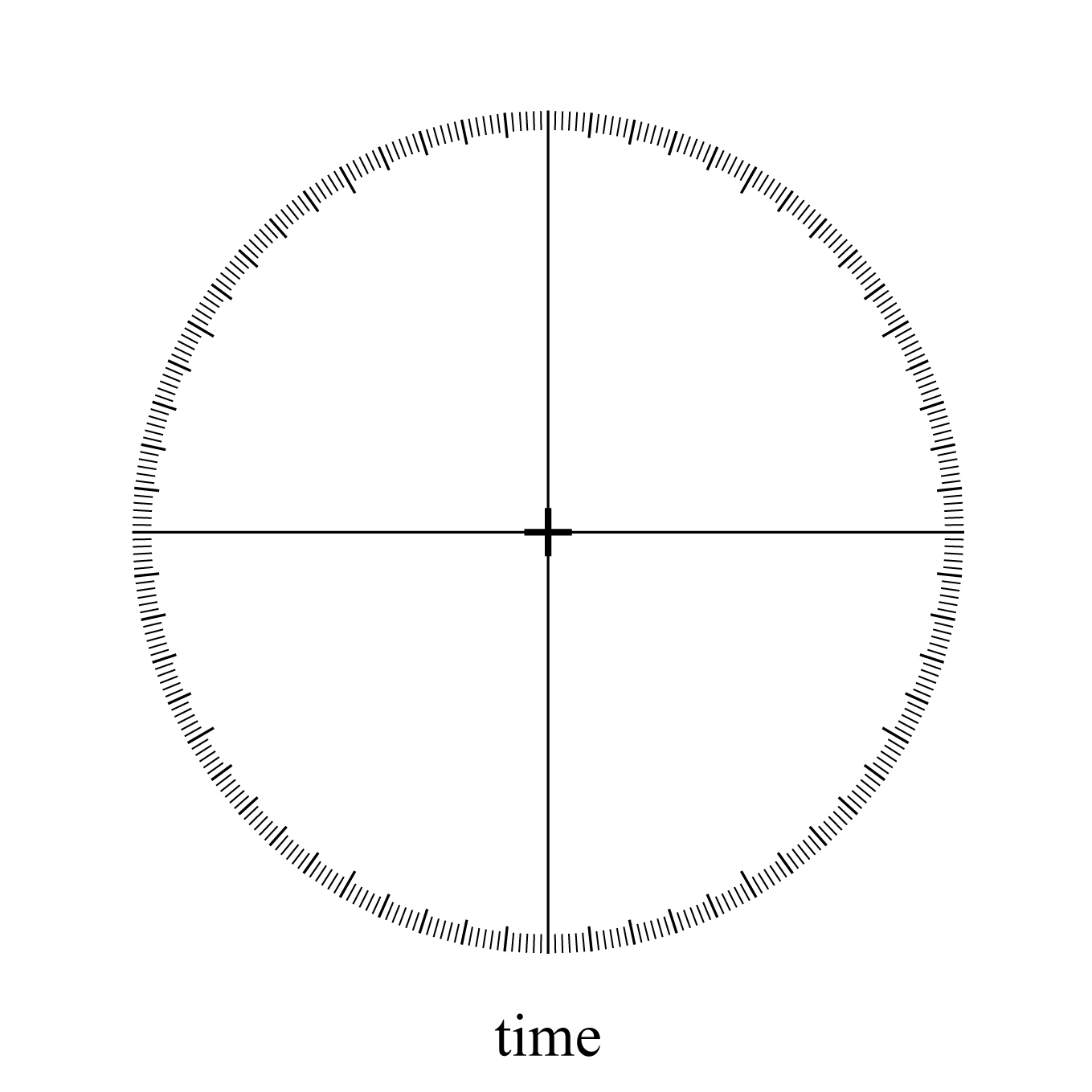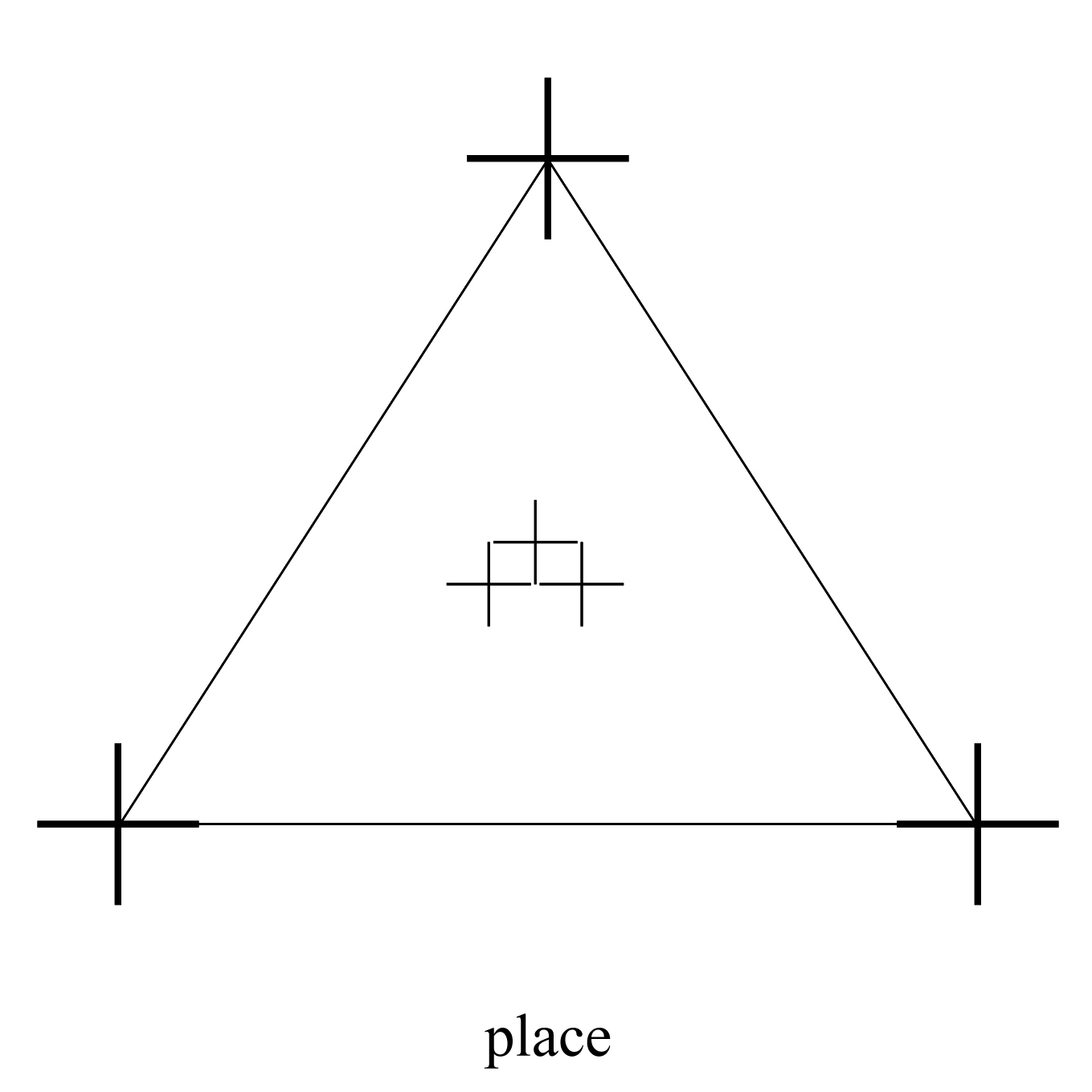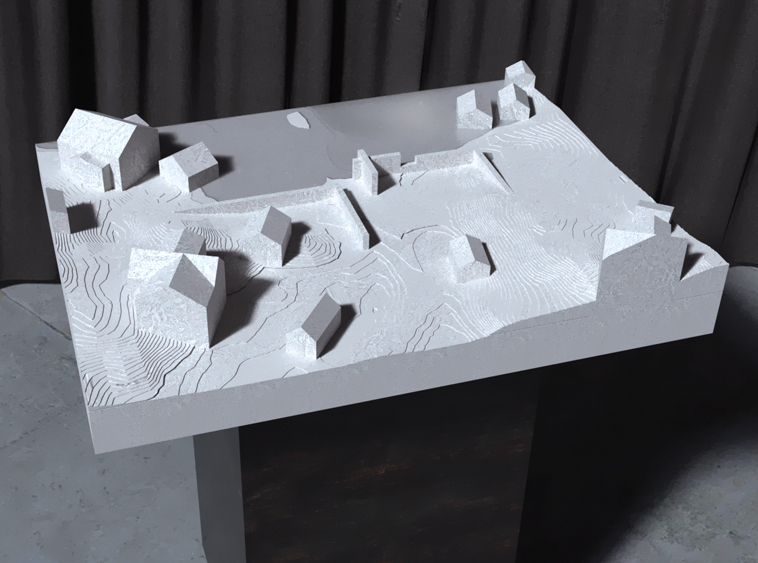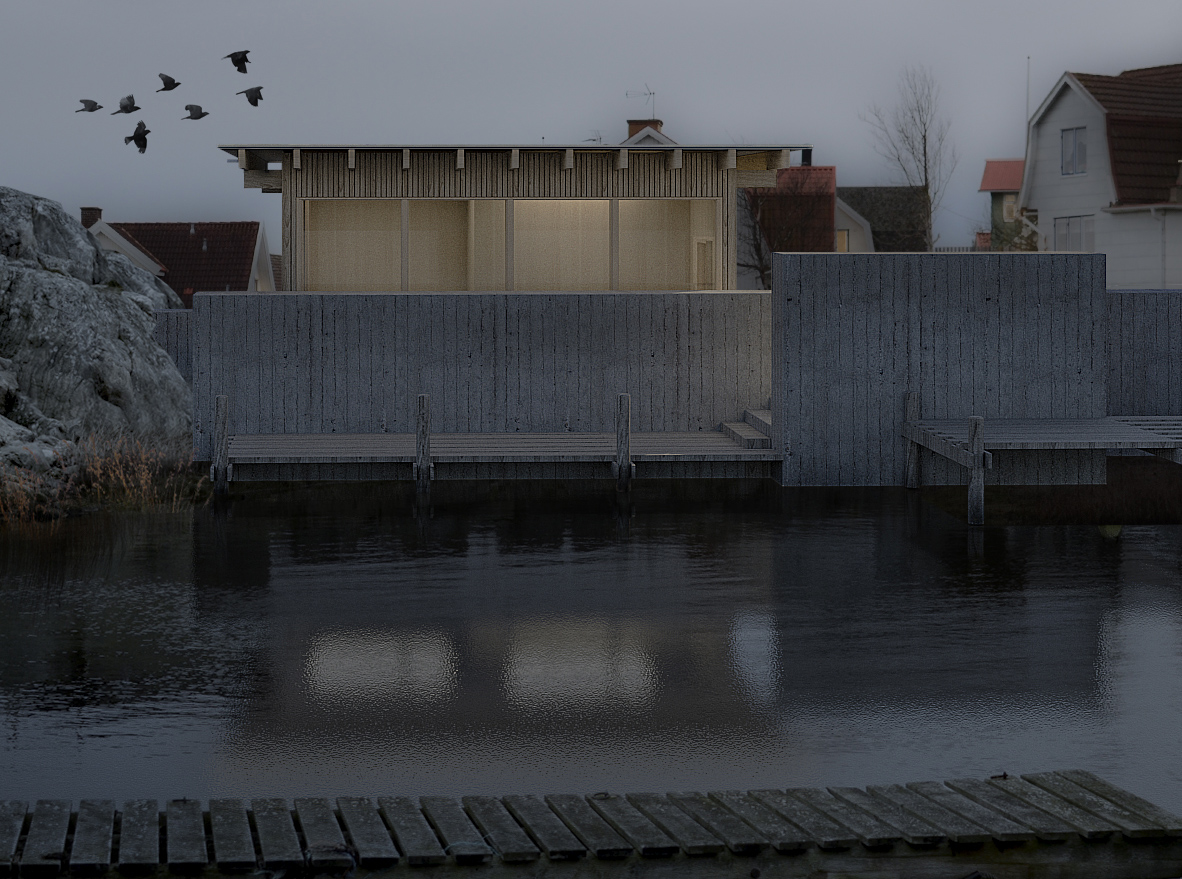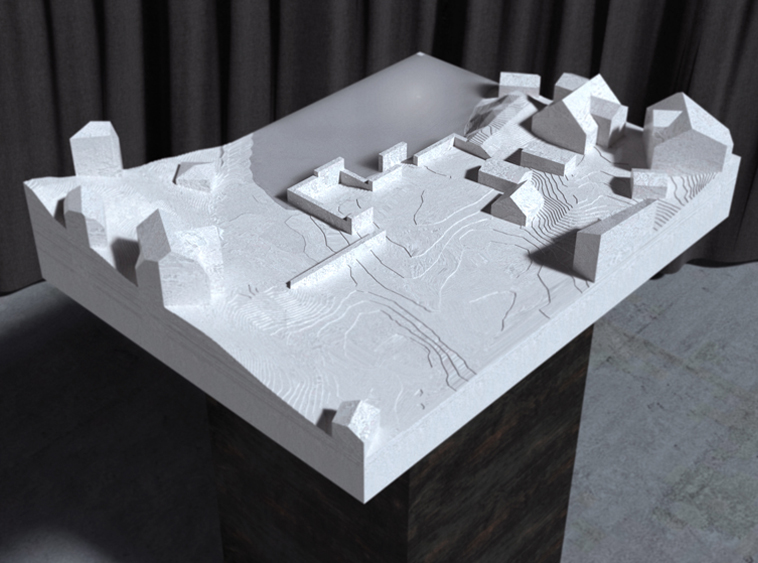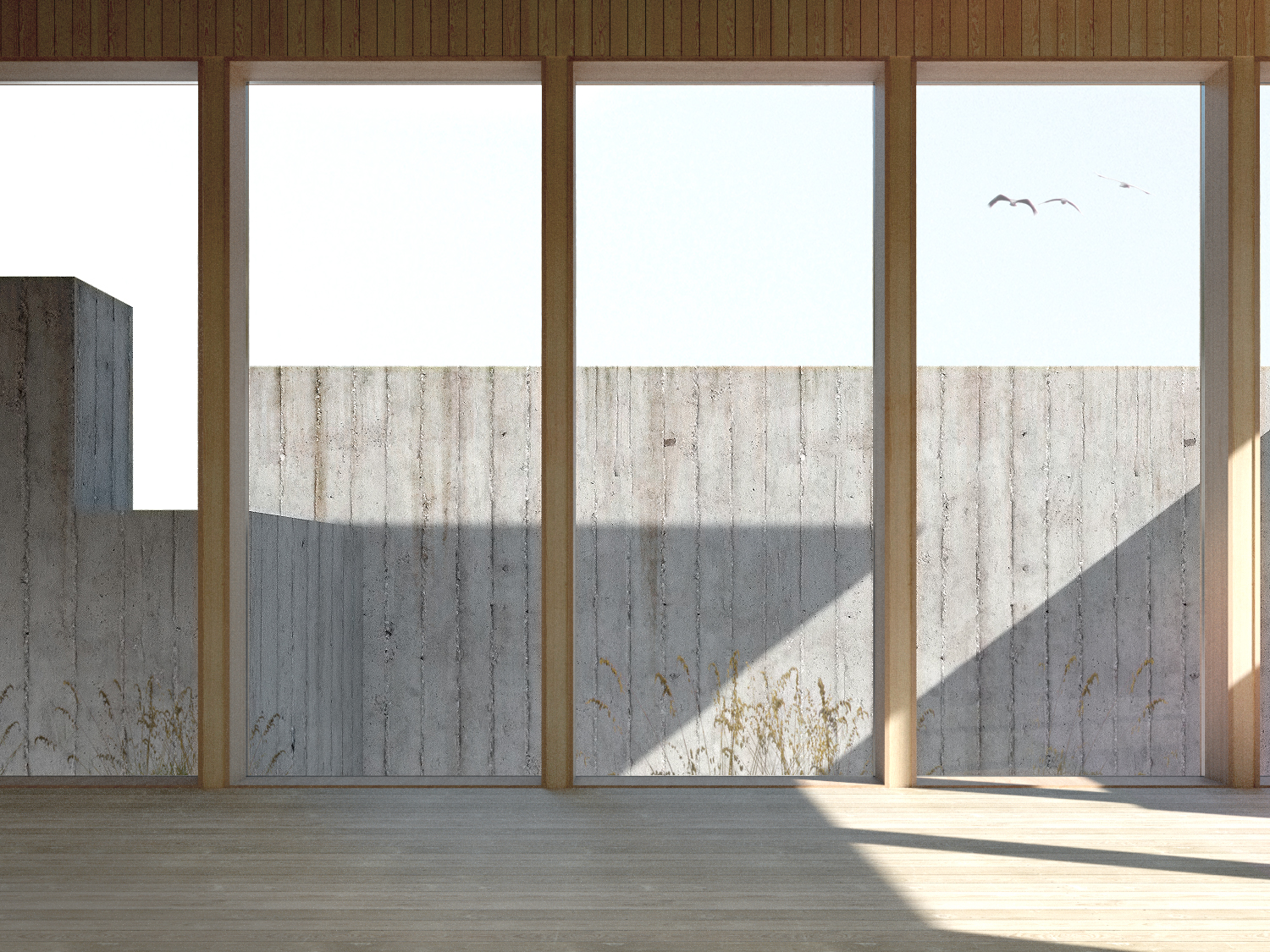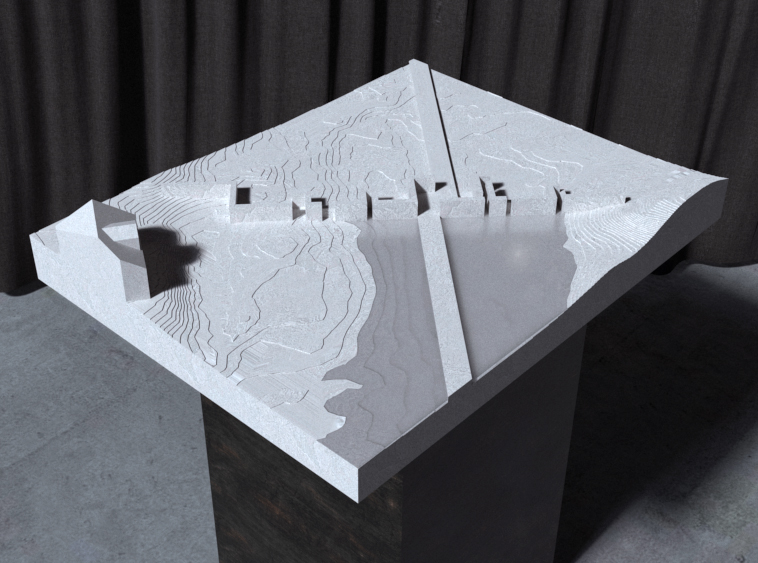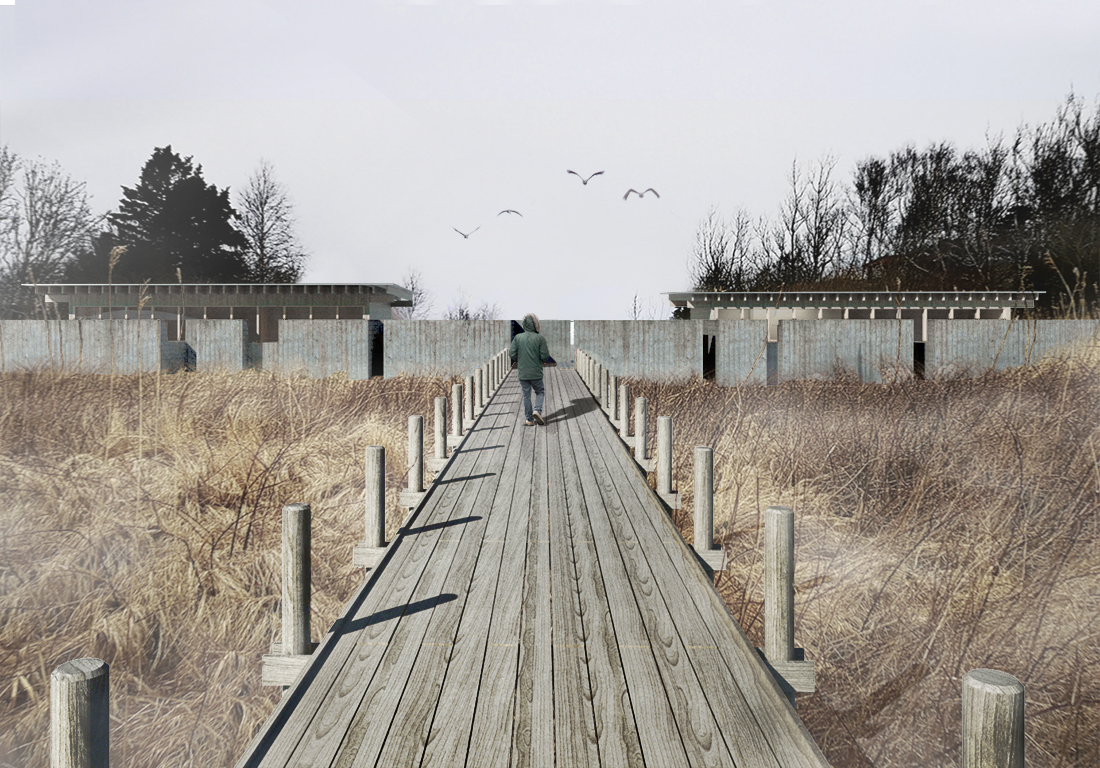TALES OF AN ISLE
An approach for sustaining coastal identities in the flux of climate change
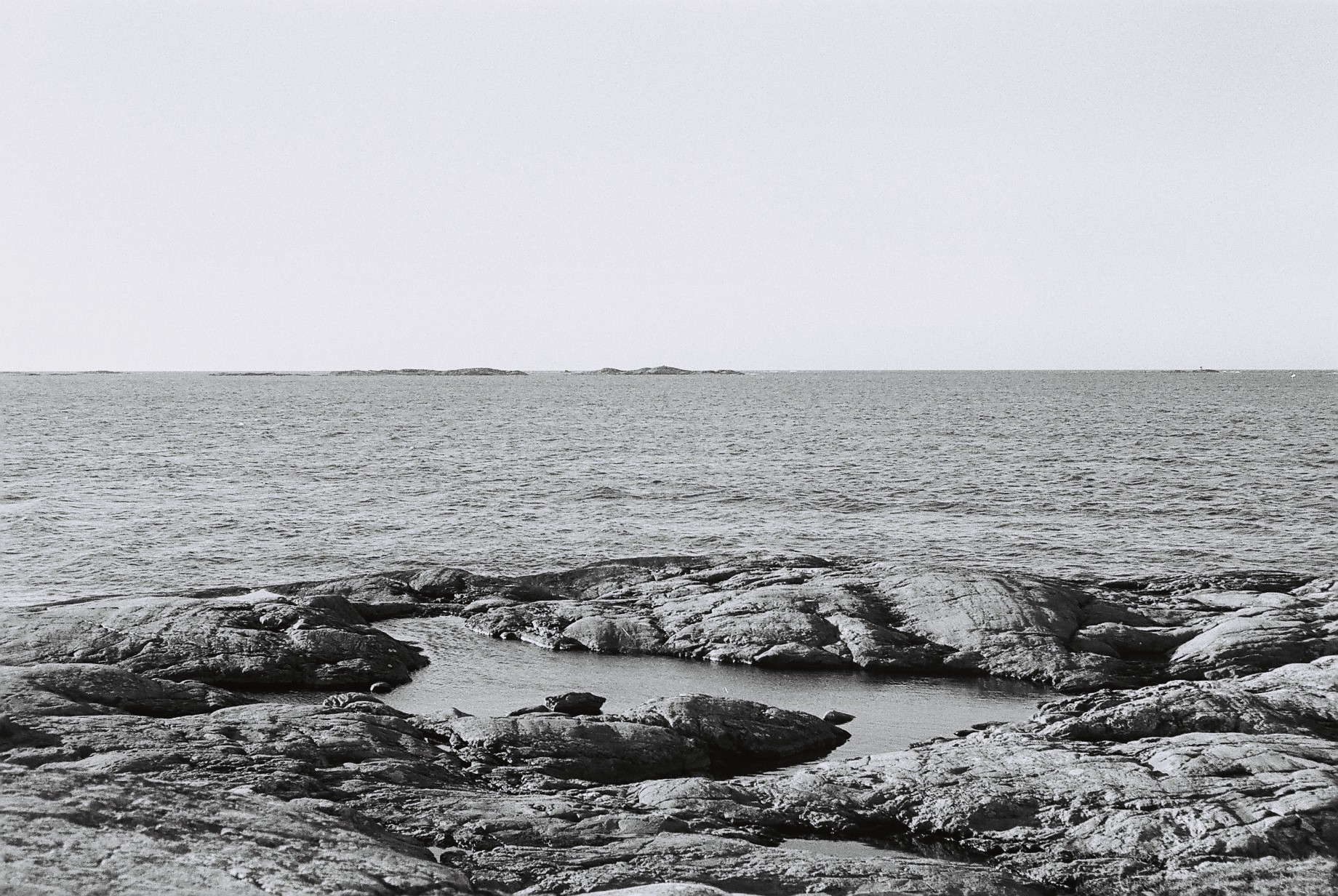
In a vast ocean landscape, islands present a dual nature of both isolation and connectivity. Today, the islands are linked to each other and to the mainland of Gothenburg, forming an overall whole related through both collective identification and through infrastructure and public transportation. Yet, islands are finite pieces of land that may share characteristics, but have in a zoomed in perspective individual local identities.
. . .
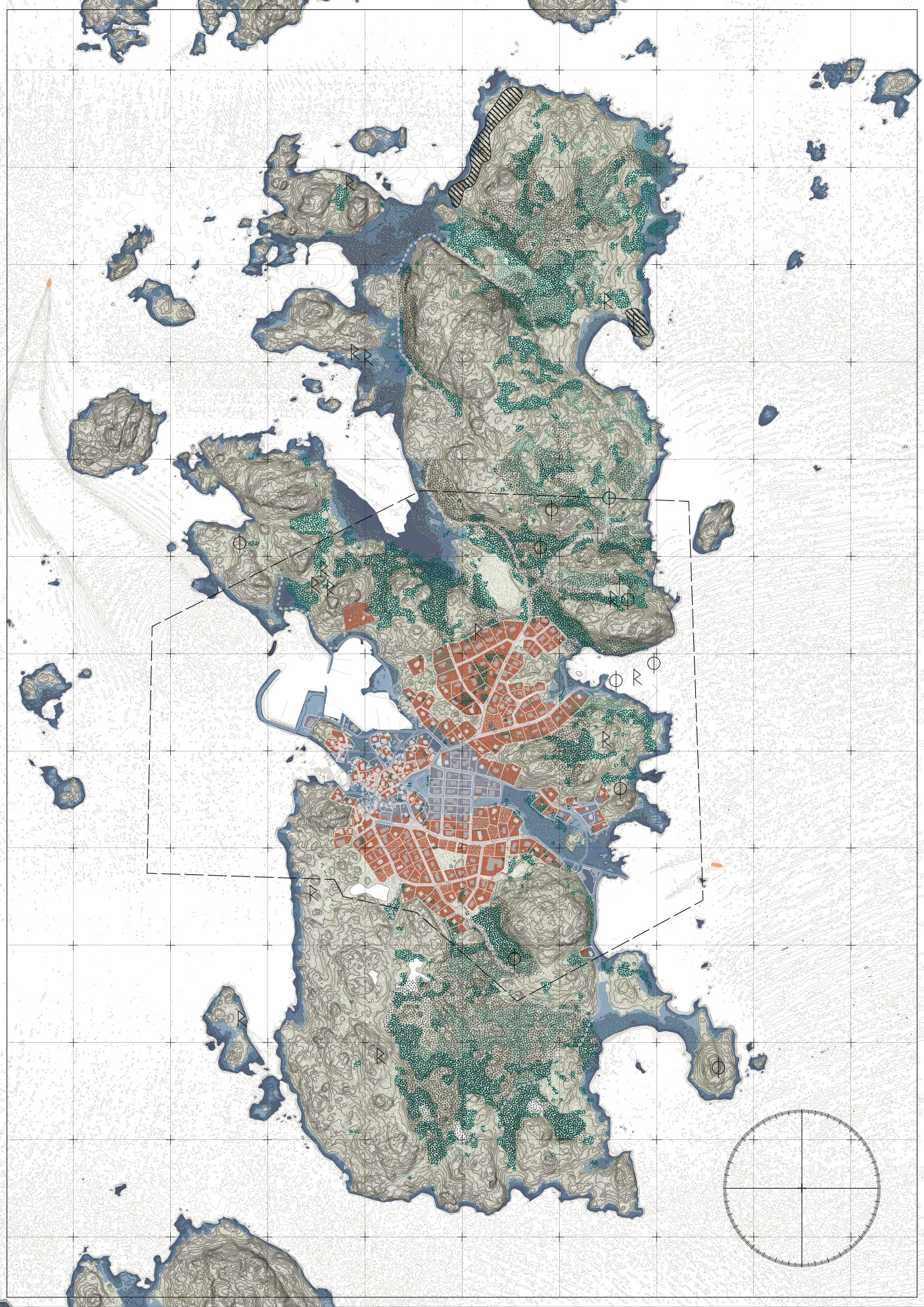
A hundred years from now sea level rise will transmute the archipelagic landscape. The world will witness a great loss of coastal communities and architectural heritage. Therefore, sea level adaptation has become a question for many Swedish municipalities. In Gothenburg high water barriers, located in the estuary of Göta älv, might save the urban river shores, but it will not protect the peripheral archipelago. Due to their location these islands are particularly exposed to the forces of nature. Vrångö is the southernmost inhabited island of the southern archipelago. Large parts of its community lie in the lowland spanning from west to east. The consequences of a sea level rise would therefore be severe. This master’s thesis seeks one approach for sustaining the coastal identity of Vrångö in the flux of environmental change. The aim is to explore and discuss an approach to climate change adaptation, beyond technological innovation: How can architects, in a local context, support a cultural and historical continuum endangered by sea level rise?
. . .
We look for an architectural equilibrium between the locally rooted and the ’placeless’ modern, where on-site knowledge plays the uppermost role in a sensible and thoughtful development of an island sinking into the sea. Moreover, the thesis does not praise tradition out of nostalgia for the past, but as a necessary tool to support local identities. We find support in the theory of Critical Regionalism. Three main aspects can be found in architectural examples of the theory. These are the relation to time, the dialogue with the specific place and the bodily presence. From here we develop a method, for which these three aspects are fundamental. In our work this method became instrumental for the generation of initially unimagined results. And, step by step, it took us closer to our architectural proposal.
. . .
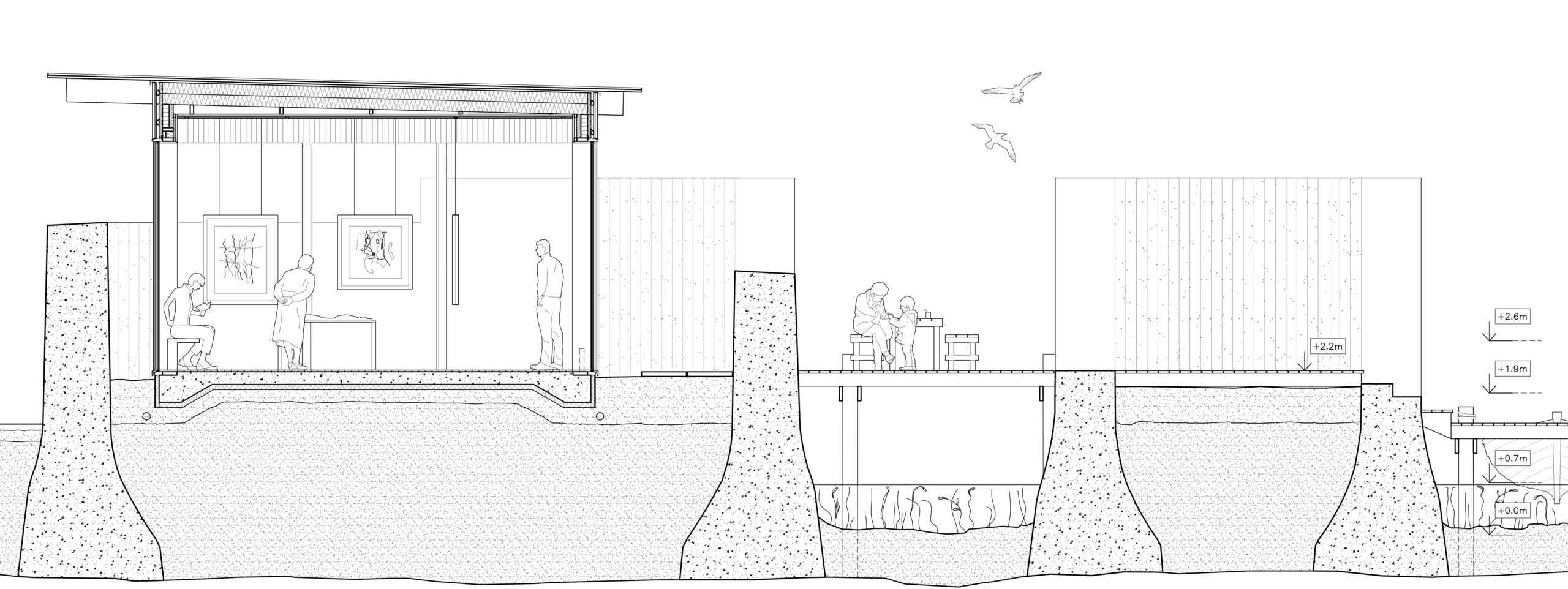
The search for answers resulted in a twofold proposal. This proposal protects today’s island community while preserving its relationship to the sea. It also gives space for a local collectivity to thrive side by side with the fluctuating presence of island visitors. The proposal departs from the distinction between eternal and ephemeral elements which emerge in two architectural layers. Together they form a compound of quite aggressive infrastructural solutions on a larger scale, and lighter architectonic qualities in a zoomed-in perspective. A triptych of three sites forms a versatile universe of its own, targeting the local community and citizens associations, as well as the island’s guests. The aim of the eternal – the walls – is to achieve durability while the protected, ephemeral architecture follows the fickle rhythm of time. They interact and accentuate each other, as they become one whole.
Tales of an Isle
